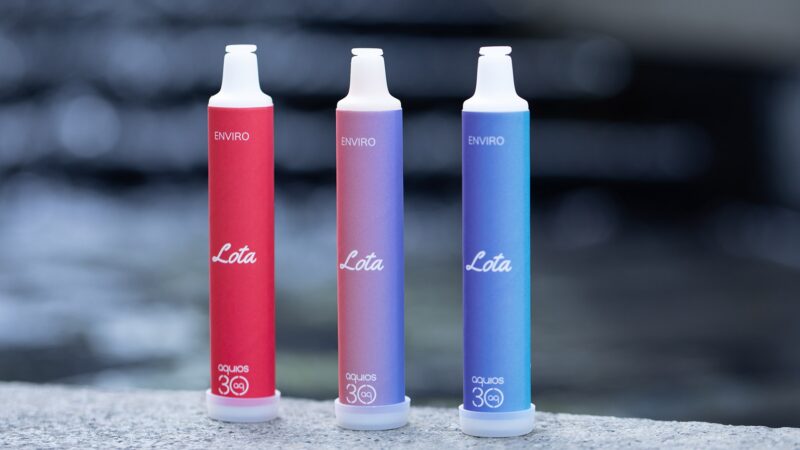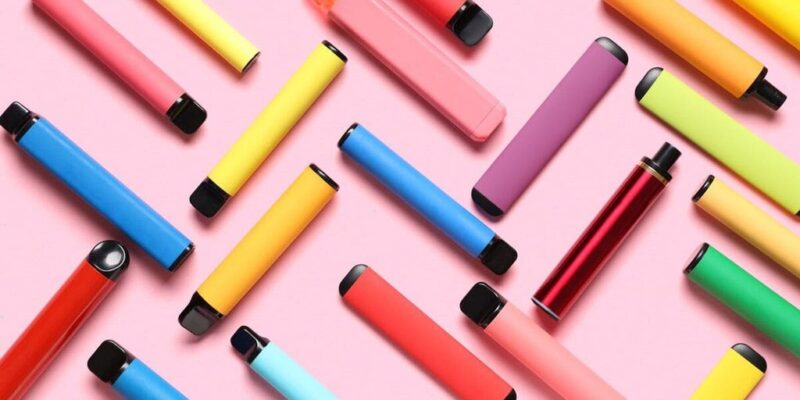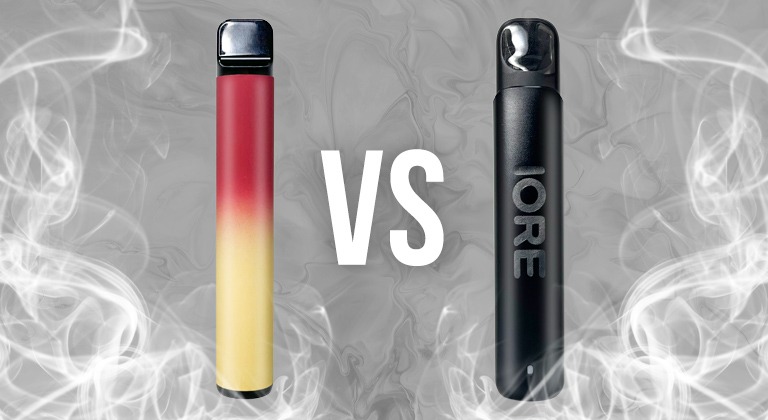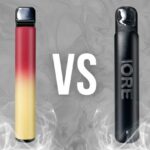The vaping industry has come a long way since its early days. With modern designs and better safety standards, today’s vapes aren’t just gadgets – they’re tailored experiences.
One of the biggest choices you’ll face, especially if you’re new or upgrading, is whether to go with a rechargeable vape or a non-rechargeable (disposable) one. And this decision isn’t as straightforward as it seems.
Both have their pros, but the right pick depends on how often you vape, how much effort you’re willing to put in, and whether convenience or customization matters more to you.
Key Takeaways at a Glance
- Rechargeable vapes give long-term control but come with initial maintenance.
- Non-rechargeables are simple and travel-friendly, but less eco-conscious.
- Puff performance and battery output differ significantly across types.
- A well-made disposable can rival some rechargeables.
- Your lifestyle should drive your choice – not just price or trend.
The Real Difference Between Disposable and Rechargeable Vapes

At the heart of it, the difference is lifespan. Rechargeable vapes are intended for repeated use: you charge them, swap out pods or refill tanks, and keep going. Disposables are single-use. Once the battery or e-liquid is depleted, you toss the whole thing.
But there’s more to this than just durability. Disposable vapes are self-contained and require zero upkeep – which is exactly why they’ve taken off with casual users and social smokers. Meanwhile, rechargeable vapes are better suited for those who want consistent quality, stronger hits, and the ability to control nicotine intake.
One isn’t universally better than the other. But one might suit you better, depending on how and why you vape.
Why Disposable Vapes Still Dominate
Disposable vapes have become far more advanced than they used to be. Forget the weak hits or artificial-tasting e-liquid from early models – newer disposables are engineered with improved airflow, better wicks, and even mesh coils that rival entry-level pod systems.
One standout is the hitz 2g disposable vape. Unlike older devices that were limited to a few hundred puffs, this one offers a robust battery paired with satisfying flavor that doesn’t fade too quickly. Devices like these have helped redefine what disposable vaping means – making them not just beginner-friendly, but a genuinely valid choice even for experienced users.
Disposables are ideal for:
- Trying out different flavors without long-term commitment
- Occasional vapers who don’t want to deal with cleaning or charging
- Travel scenarios where carrying pods and chargers is inconvenient
- Social users who value portability and discretion
And because disposables are pre-filled and pre-charged, there’s zero learning curve. That’s hard to beat when you just want something that works.
Rechargeable Vapes: Built to Last

If vaping has become part of your daily routine, rechargeables tend to make more sense. These devices are built to handle frequent use, offer longer-term savings, and give users more freedom over things like wattage, coil type, and nicotine strength.
They come in various forms:
- Pod systems for portability and ease
- Box mods for power users who want control
- Hybrid devices that bridge simplicity and performance
The real advantage of rechargeables lies in their customizability. Want to drop your nicotine from 25mg to 3mg gradually? Refillables let you do that. Prefer menthol in the morning and dessert flavors at night? Swapping coil, cartridges or tanks is easy.
What you gain:
- Ability to adjust flavor intensity and airflow
- Smoother, denser vapor for those who chase clouds
- Lower long-term cost if you vape regularly
- A sense of control over your own vaping experience
However, these benefits come with responsibilities: charging, cleaning, changing coils, and sometimes troubleshooting. If you’re not prepared for a little maintenance, that freedom may start to feel like a chore.
Performance Over Time: Battery and Vapor Consistency
One issue many disposable users notice – especially as the device nears its end – is fading performance. As the internal battery drains, the voltage drops, and so does the vapor quality. You might start with bold flavor and thick clouds, only to finish with thin, muted puffs.
Rechargeables, by contrast, usually regulate power output. This means your vape will hit the same way from 100% battery all the way down to about 10%, assuming you’re using a regulated mod or pod system. That alone can dramatically improve consistency.
And while the disposable ones perform impressively well for a one-time-use devices, if you’re the type who notices subtle shifts in draw strength or throat hit, a rechargeable might give you a more reliable session from start to finish.
Additionally, many rechargeable devices now offer pass-through charging, meaning you can use them while plugged in. That’s a small but significant perk, especially for heavy users.
The Flavor Factor: How Each Option Stacks Up

Flavor used to be the domain of refillable tanks. They had better coils, better airflow, and better juice selection. But today’s top-tier disposables are a different beast. Brands have invested in better e-liquid formulas, mesh heating elements, and airflow designs that seriously elevate the taste experience.
Still, if you’re serious about flavor complexity and variety, refillable systems maintain the edge. You can rotate between dozens of e-liquid brands, choose high VG or salt nic options, and match the right juice to the right coil. That kind of fine-tuning can only be done with a reusable setup.
To sum it up:
- Disposables offer great flavors that are pre-mixed, tested, and stable
- Rechargeables give you access to boutique juices, limited editions, and low-nic blends
- Flavor seekers who want high-end or niche experiences will lean toward rechargeables
- Casual users who want good flavor without decision fatigue will do fine with disposables
Budget Considerations: Upfront Cost vs Ongoing Spend
On the surface, disposables look cheaper – $10–$20 per unit, sometimes less if you buy in bulk. But if you’re going through one or two a week, that adds up quickly. Within a couple of months, you’ll have spent as much (or more) than you would have on a decent rechargeable kit.
Let’s break that down:
| Criteria | Rechargeable Pod System | Disposable Vape (e.g., Hitz 2g) |
| Upfront Cost | $30–$60 | $10–$20 per unit |
| Monthly Spend (moderate use) | $15–$30 (refills/coils) | $40–$80 (multiple disposables) |
| Lifespan | 6–12 months (with care) | Single use |
| Customization | High | None |
If you’re a casual vaper, the higher long-term cost might not matter. But if you’re using it daily, it’s worth doing the math. Rechargeables are more economical once you’re past the initial setup.
Environmental and Ethical Impact

There’s no sugarcoating it: disposables contribute significantly to electronic waste. Lithium batteries, plastic shells, and leftover nicotine solution make proper disposal complicated – and unfortunately, most end up in landfills. Even the best disposable devices, like the hitz 2g disposable, share this environmental downside.
Rechargeable systems reduce the number of batteries you go through annually. With one device, you’re looking at hundreds (if not thousands) of puffs, with fewer cartridges and waste materials overall.
If sustainability is part of your buying decisions, rechargeable vapes are the better path. And some brands now offer recycling initiatives for pods and batteries, giving you a cleaner conscience – but only if you actually participate.
Let Your Habits Decide
Trends come and go, but personal preference holds up over time. Instead of asking “Which type is better?”, ask this: What kind of vaper am I?
- If you value plug-and-play simplicity and travel light – go disposable.
- If you care about flavor control, cost savings, and long-term use – go rechargeable.
There’s no one-size-fits-all. But by understanding how the two types differ in flavor, battery life, cost, and environmental impact, you’ll be able to make a smarter, more satisfying decision.
FAQs
How should I dispose of a used disposable vape properly?
Disposables vape contain lithium-ion batteries and nicotine residue, which can be hazardous if thrown in regular trash. Look for local e-waste collection centers or vape shops that offer battery disposal programs. Never toss them in household recycling.
Is there a risk of leaking with either type of vape?
Yes, but the risk differs. Rechargeables with refillable tanks may leak if not assembled properly or if stored horizontally in heat. Disposables are sealed and less prone to leaks, though rare factory defects can still cause issues.
Can vape performance be affected by altitude or weather?
Absolutely. High altitudes or extreme cold can affect vapor production and battery function in both device types. Rechargeables with regulated output handle these changes better than disposables.
Are there nicotine-free options for both types?
Yes. While more common in refillable setups, some disposables now offer 0mg nicotine options – helpful for flavor chasers or those trying to quit entirely.
What certifications or safety labels should I look for?
Check for certifications like CE, RoHS, or compliance with local vape regulations. Rechargeable models from reliable brands should list battery protection features, while disposables should at least list ingredients, nicotine content, and batch codes.







